How Brands Psychologically Manipulate You Into Buying Crap You Don’t Need
<p>Here's how retail stores psychologically control you and make you spend more.</p>
Updated Sept. 6 2018, 6:07 p.m. ET
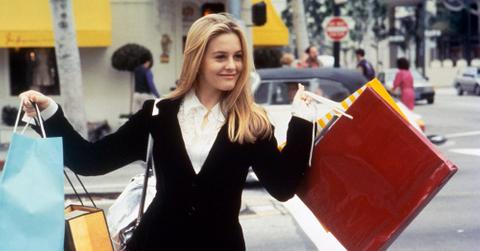
If you've ever found yourself running into Target to buy a carton of eggs only to leave with a basket full of candles, slippers, snacks, and other junk you don't need, you've been a victim of the "Target effect." Consumers have even turned it into a hashtag, sharing pictures of their packed carts to prove how tantalizing the effect is. But what is it about retail stores that make us want to buy more stuff than we need? Although you might just think you have poor impulse control, the reality is that brands are intentionally manipulating you into buying more. Below, a few ways they psychologically control you.
1. They use color psychology to persuade you to spend.
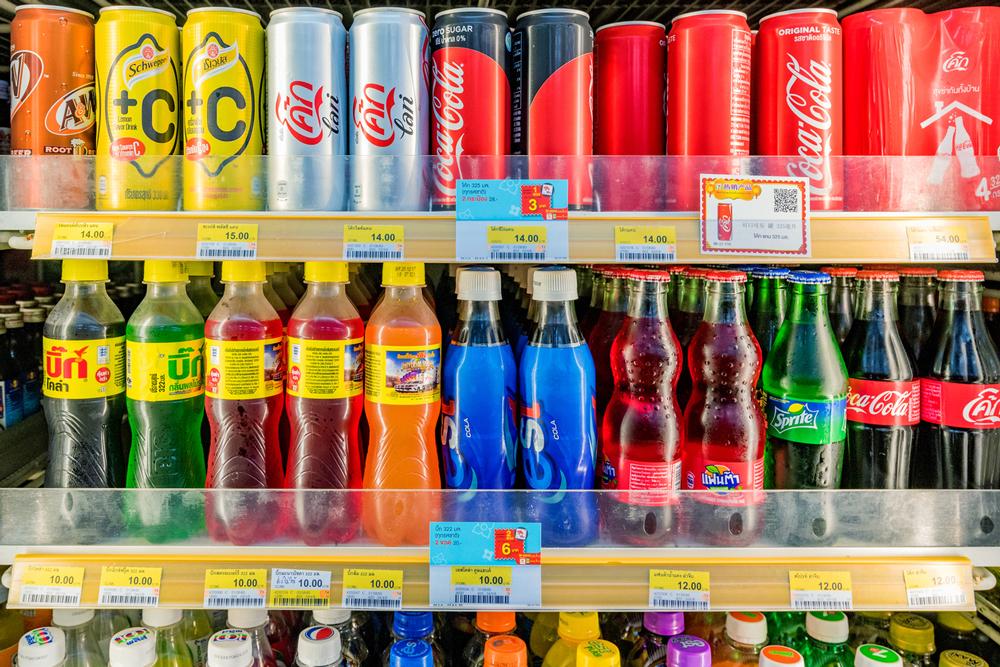
Color psychology plays a huge role in how your buy items. It can change your mood, evoke a feeling, and even subtly suggest an idea. For example, red is a frequent color in sales since it evokes action, which definitely helps explain all those impulse purchases at Target. A study even found that waitresses who wear red get bigger tips. Other colors that manipulate you is black, which is associated with high-end, expensive items that seem exclusive, and blue, which is associated with trust and loyalty.
2. They purposefully make the layout confusing.

There's a reason essentials like milk are stuck all the way in the back of the store. Retail stores in particular are designed to be attractive mazes that are easy to get lost in. The more time you spend in the store, struggling to get to that elusive exit that's blocked by 15 displays of random, cheap crap you don't need, the more likely you are to spend money. There's even a word for it: the "Gruen transfer," which is named after Austrian architect Victor Gruen who designed shopping malls. Although he later disavowed the practice, accusing malls of bastardizing his ideas, the practice is still very much still in effect.
Notice how big department stores don't have any windows aside from the ones by the entrance? That's not an accident. Stores try to remove the aspect of time, creating an experience where you're essentially "lost" in the store and more likely to forget the original reason that you're there to begin with. What happens is that you then mindlessly go into "buying mode," forgetting all about that one carton of eggs you came in for. You have to admit, it's pretty clever...and evil.
3. They intentionally make those displays messy.
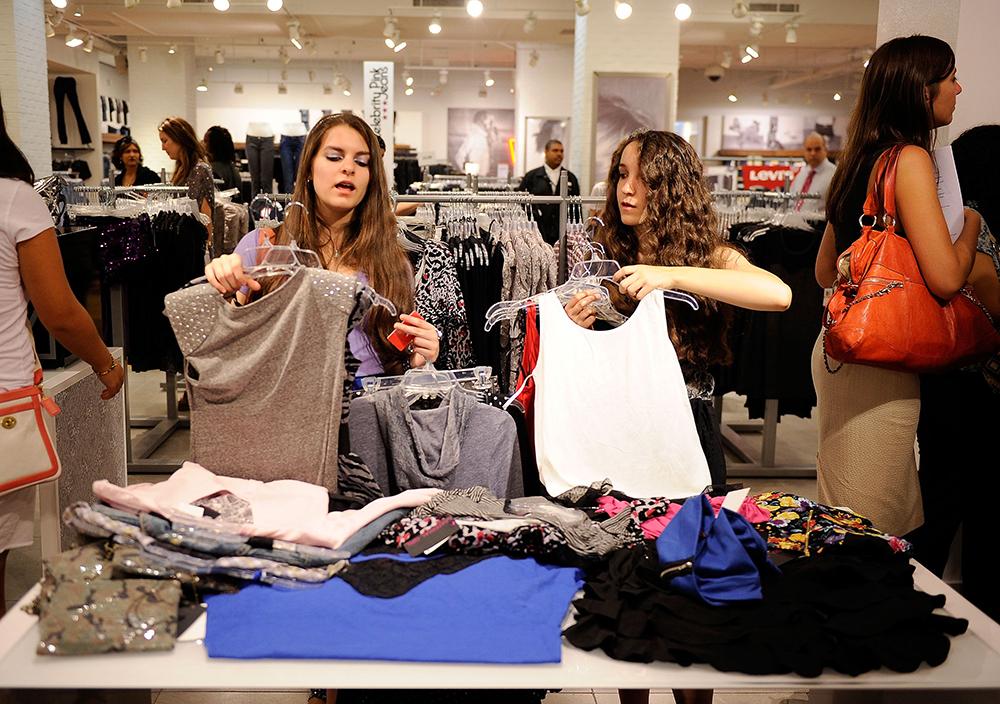
One thing brick-and-mortar stores have over online shopping is the sensation of touching things before you buy them. According to a study conducted by Proctor & Gamble, people who were able to feel merchandise were willing to pay more than those who hadn’t. It's called the “Endowment Effect," and you'll see it in action whenever you see big, messy display tables or bins of cheap merchandise just begging for you to ruffle through them. Once our hands touch something, we feel a subconscious sense of ownership over it, which promotes us to buy.
But it doesn't stop there. We're also more likely to purchase things that are similar to what we're already holding. According to a study published in Applied Cognitive Psychology, people who are holding their smartphones in their hands are more likely to buy a Kit-Kat over a Snickers bar since the former is shaped like a smartphone. Weird, huh?
4. They surround you with enticing scents.
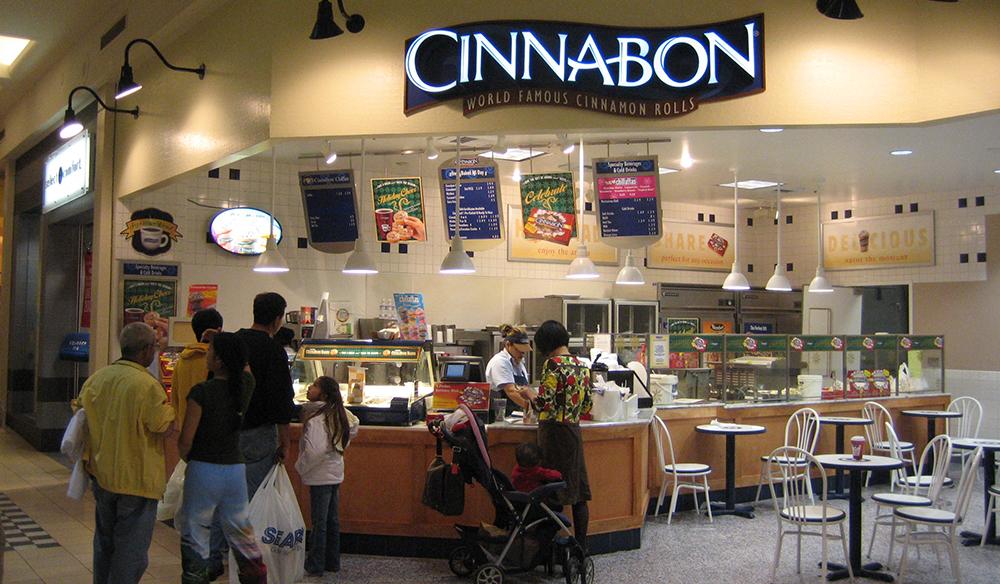
There's a reason there's always a Cinnabon right at the entrance of every shopping mall or a flower shop right by the entrance at the grocery store. Good smells put us in a good mood, which makes us shop more. For example, researcher Martin Lindstrom, who wrote Brandwashed: Tricks Companies Use to Manipulate Our Minds and Persuade Us to Buy, once pumped the smell of apple pie into an appliance store. The result? The sales of ovens and fridges went up 23 percent. Even Disneyland uses the scent of vanilla to fool its customers into thinking they're at the happiest place on earth.
But if you've ever walked past a clothing store pumping too much perfume (Ambercrombie & Fitch was notorious for this), it's likely to have an opposite effect. According to research studies, consumers prefer uncomplicated smells that are simple and not overbearing. Researchers at Washington State University College of Business found that the scent of orange was the best smell to entice people to buy.
5. They play just the right music.
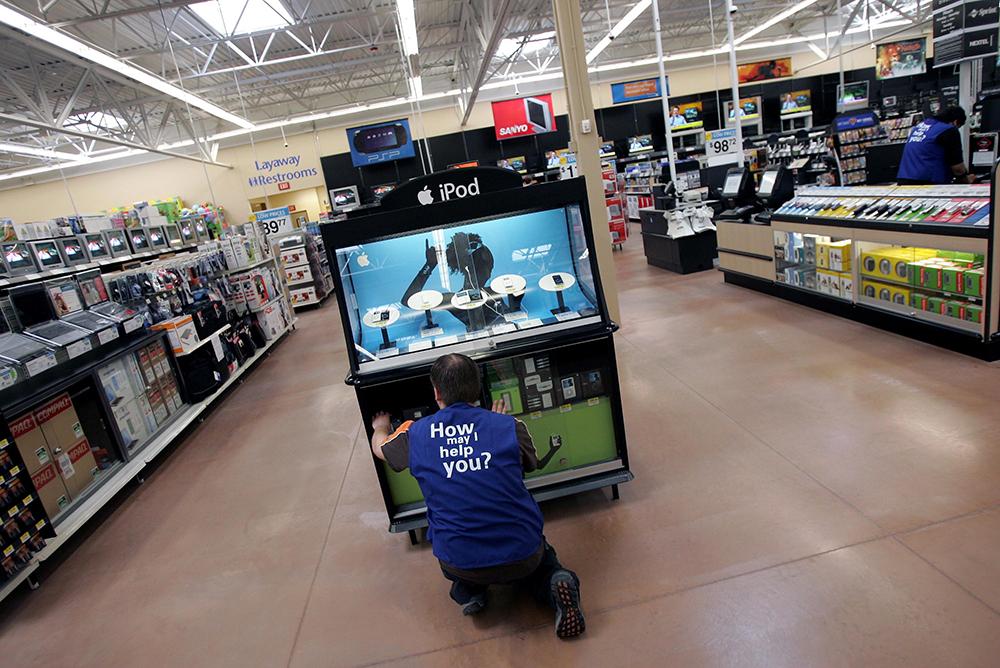
That slow-tempo elevator music is playing continuously for a reason, and it's not because anyone actually likes that crap. Studies show that slow music might make you spend more on impulse purchases. Of course, there are exceptions to the rule. Stores with younger consumers are more likely to play loud pop music and high-end stores tend to play classical music. But meandering background music seems to be the winning formula when it comes to supermarkets. A 1983 study found that people spent 34 percent more time shopping in stores that played this type of music.
6. They place more expensive items at eye level.
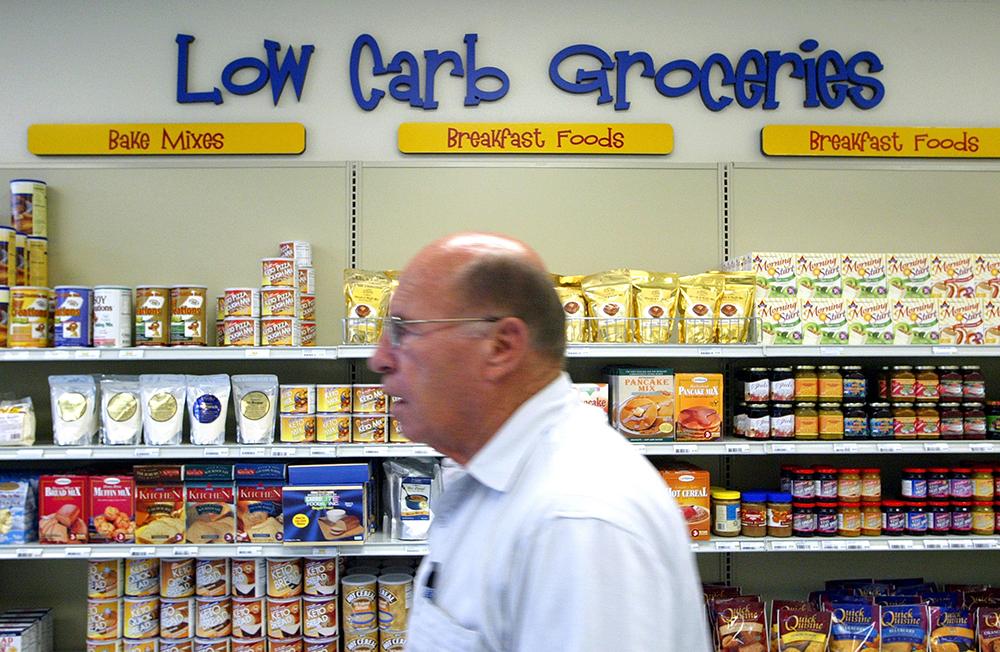
How products are organized are also designed to manipulate you. Stores strategically place higher-priced items at eye level, forcing you to crouch to find the more affordable stuff. Grocery stores are also known to place children's cereals lower on the shelf so that kids can find them. And if you think that sounds creepy, it gets worse. One study found that those cartoon characters on the boxes of certain cereals are designed to make eye contact with kids as they pass by.
7. Sales people at high-end stores intentionally act snooty.

Remember that famous scene in Pretty Woman when Julia Roberts gets chased out of a high-end clothing store for not being rich? She then returns, armed with her bags of expensive purchases, to rub her newfound wealth in the saleswoman's face. Just like that famous scene, according to recent studies, snooty sales clerks make people want to spend more. "Our research indicates they can end up having a similar effect to an 'in-group' in high school that others aspire to join," professor Darren Dahl, a marketing expert leading the research, told The Daily Mail. "The desire 'to belong'…is a powerful force."
8. They create the illusion you're getting a good deal.
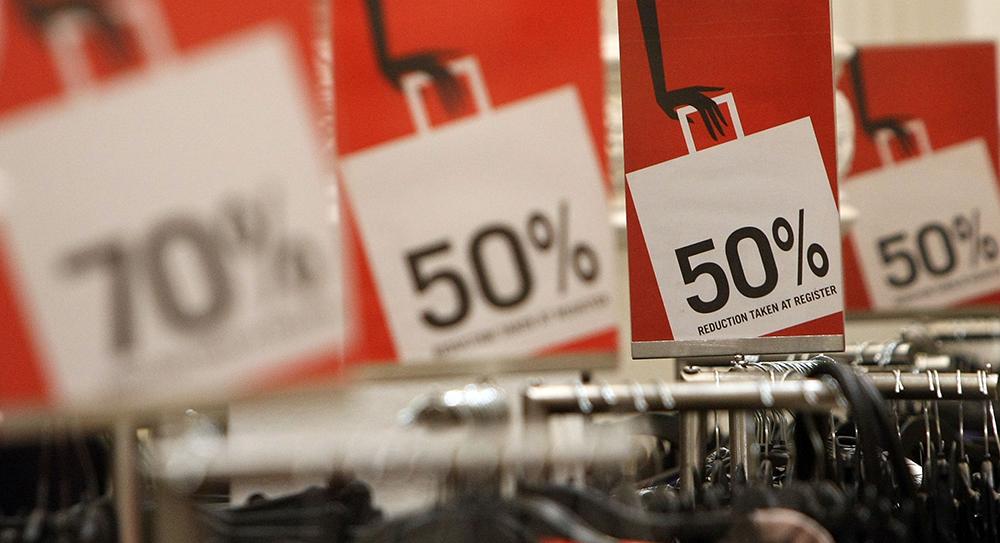
Most people buy when they think they're getting a good deal. After all, isn't that why people literally kill each other on Black Friday to get a cheap TV? Unfortunately, the reality is that you're not really getting a bargain, and fooling you into thinking you are is one of the oldest sales trick in the book. It's called "anchoring," and it's used by everyone. How it works is that a store will advertise a product with two prices, a higher one that's marked out and a lower "sales" price. The catch is that the store never intends to sell the item for the higher price. The whole point is to create an illusion that you're getting 50 percent off, when really you're not. Bummer.
9. They tell you it's "free."

Online shoppers, you're not immune to manipulative sale tactics, either. Many online stores will offer free shipping if you have a certain number of items in your cart, usually $50 worth of products. What often happens is that a consumer buys additional things they don't need to get the free shipping, even though they would be saving money by simply paying for shipping. For some reason, there's something about the word "free" that triggers our brains.
In his book Predictably Irrational, Dan Ariely explains the tactic by using Amazon as an example. Several years ago, Amazon France offered one franc shipping (about 20 cents in American dollars) for certain purchases. Even though the shipping was still cheap, consumers didn't take the deal. It wasn't until they advertised "free" shipping that they saw a significant increase in sales.
10. They price everything one cent short of a whole number .
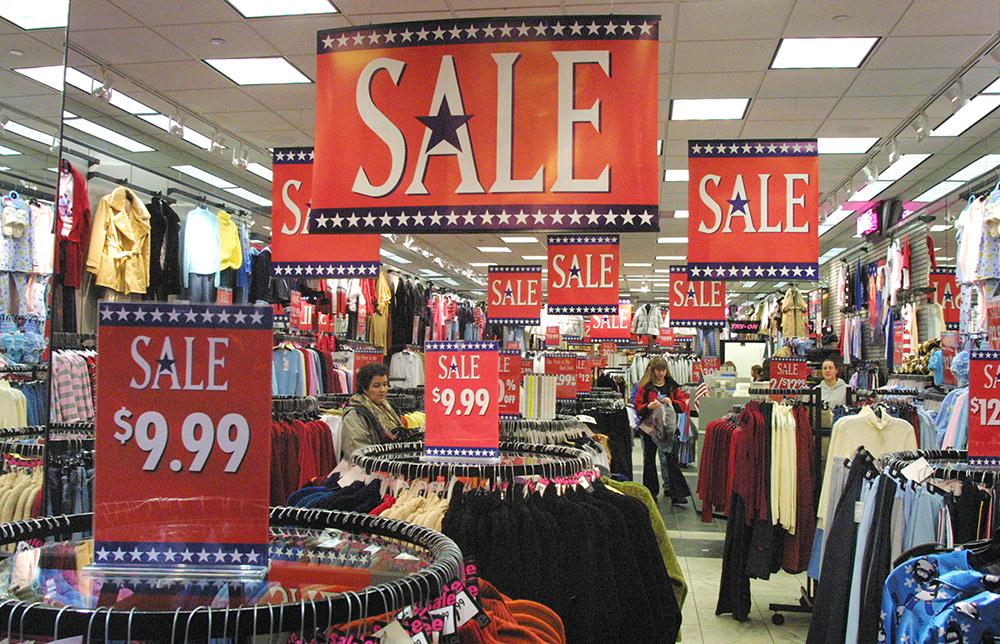
This is used everywhere, from McDonald's .99 cent menu to Target's endless $9.99 clothing deals. It's called the "left-digit effect," and according to studies, consumers are more likely to look at the left-most number to indicate their perception of price. So when choosing between a pen that's $1.99 and one that's $2.00, consumers are more likely to look at the "1" when deciding what to buy, even though both pens are essentially the same price.
11. They create "limited offers" that aren't all that limited.
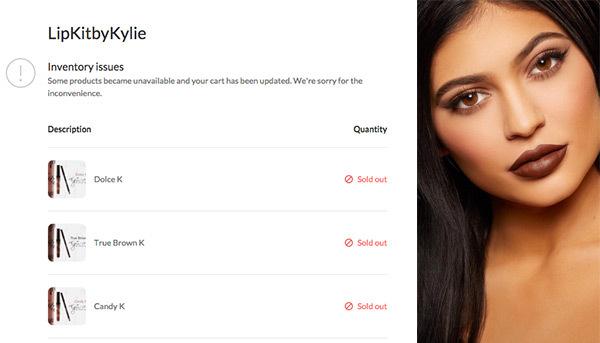
Brands also take advantage of our FOMO when advertising sales. Deals that have time restrictions or are marketed as being "almost out of stock" are designed to entice consumers who want to buy the item before it's gone. Psychologists call it the "scarcity principle," and Kylie Cosmetics is notorious for this. Isn't it awfully suspicious that her lip kits are always out of stock?
12. They strategically place cheap items by the registers.

Ever find yourself checking out at IKEA and stocking up on random toilet brushes and candles? In the retail world, these are called "open-the-wallet" items and they're designed to break you down mentally. If they can get you to reach for that candle, you're more likely to make additional impulse purchases while you're there. Writer Lauren Collins wrote for The New Yorker about how IKEA has perfected this:
"There, an abundance of cheap goods—flowerpots, slippers, lint rollers—encourages the customer to make a purchase, any purchase, the thinking being that IKEA shoppers buy either nothing or a lot. There is art in the visual merchandising, too. Albrecht showed me how IKEA uses a technique called 'bulla bulla,' in which a bunch of items are purposely jumbled in bins, to create the impression of volume and, therefore, inexpensiveness."
So, the next time you find yourself rummaging through a cheap bin of cups you don't need? Take a deep breath, grab your carton of eggs, and get the hell out of that store. You'll thank yourself later.